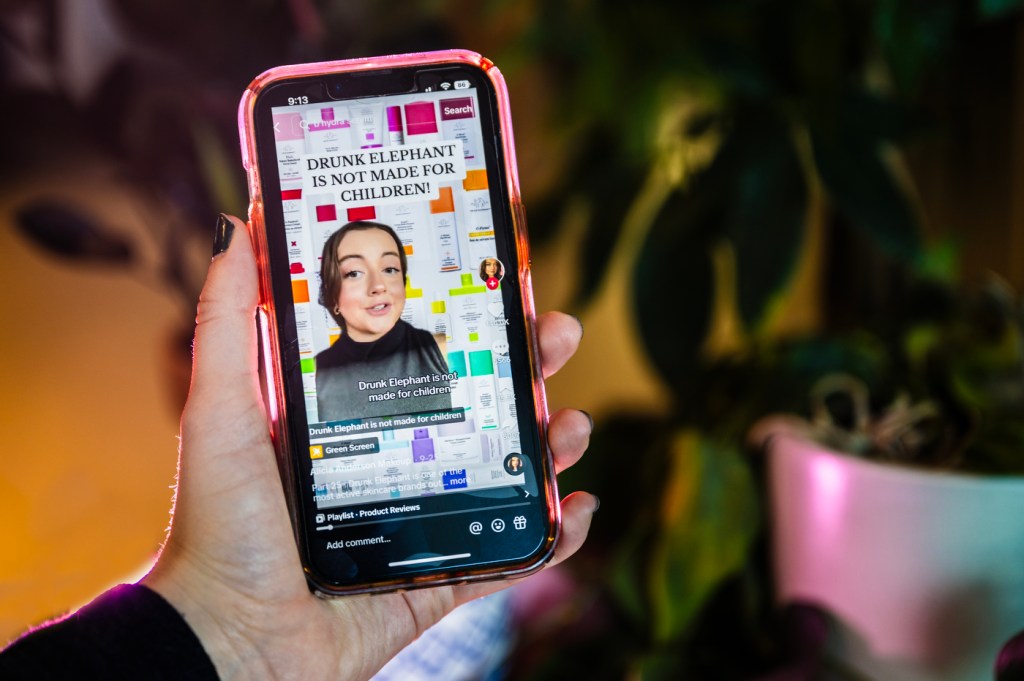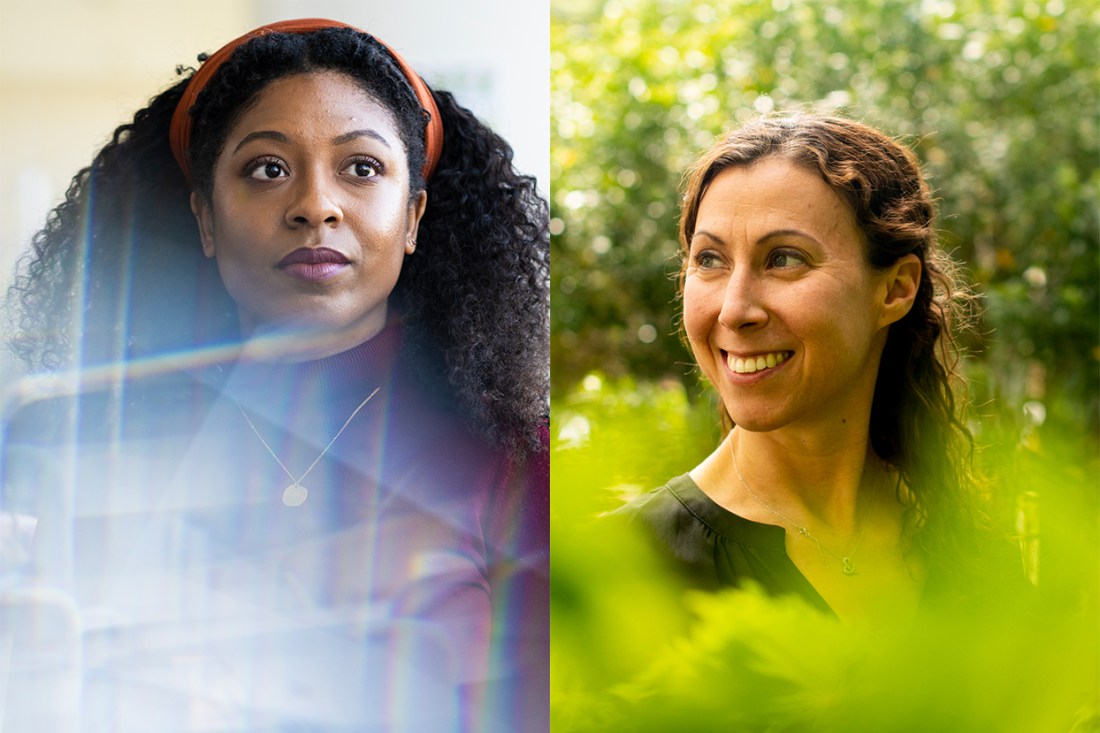Why are so many kids requesting Drunk Elephant skincare products for Christmas?
TikTok and influencers have come for wish lists this year, particularly at teens who are susceptible to the effects of social media, Northeastern experts say.

Gone are the days of teens and tweens asking for video games and toys for holidays. Today, the average holiday list includes LuluLemon leggings (running from $98 to $118) and Drunk Elephant skincare sold at a price point that many adults wouldn’t spend on themselves.
The idea of kids wanting brand-name gifts isn’t anything new, but what is surprising to parents is how young kids are asking for skincare products not made for young skin, or other more “adult” asks. But some of this is thanks to TikTok, according to Adrianna Crossing, an assistant professor in applied psychology at Northeastern University’s Bouvé College of Health Sciences.
Crossing, who has a background in child psychology, says teens are particularly vulnerable to social media and influencers. Around age 13, most children start undergoing a developmental shift and go from looking to their parents as a source of influence to their peers, she says. This is not new. What is new though is social media that allows teens a larger glimpse into the lives of both their peers and influencers.
The result is teens trying to keep up with what they see online, leading to much more designer-heavy (and pricey) wish lists than some parents have seen in holiday seasons of yore.
“Teens are deciding what they want to look like and what they should be,” says Crossing, who is a nationally certified school psychologist. “You add in all these social media and influencers are basically entering the space of what a peer group has historically represented for adolescent development. So these adolescents are not only looking to their peers for who (they’re) supposed to be, but also tons of influencers who don’t have these children’s best interests in mind. They’re trying to make money; they’re not thinking about the fact they might be reaching a 14-year-old (who doesn’t need) Drunk Elephant skincare.”

This makes adolescents more susceptible to social media than younger children in some senses; though Crossing says concerns with younger children and social media have to do with how screen time affects their development. On the other hand, adults are also not immune to influencing, but this age group is more capable of understanding cause and effect.
Featured Posts
“You can decide ‘OK, this is how much I have in my bank account. Here’s how much moisturizer from CVS costs vs. moisturizer from Sephora. I’m going to make an informed decision,’” Crossing says. “Our kiddos aren’t quite there yet and often they’re requiring their parent purchasing power to engage with these brands, and depending on the expectations around purchasing in the home, it can create a lot of conflict between kids and their parents.”
Jessica Hoffman, a professor in Northeastern’s applied psychology department and certified school psychologist, says parents should tackle these issues by having a transparent conversation with their child. Hoffman says her young child recently asked about Drunk Elephant. Hoffman heard her out and looked into the product before explaining why it wasn’t a good fit.
“I didn’t just dismiss it,” Hoffman says. “I showed her that I was listening to her and to what she was interested in. I gained more information about what the product was and what (it) was intended to do. And then I was able to explain to her that she didn’t need this on her skin, that what the Drunk Elephant product does is not something that she needs and that it actually could have some negative effects. Then I guided her towards some things that were more developmentally appropriate and in line with our budget and that I would feel comfortable with her being able to use.”
Even if a child isn’t on social media, they might still be subject to these pressures from their peers who do have a phone, Hoffman says, making these conversations even more critical.
“It’s just really important to have these conversations with kids, discussing what kids are viewing and what’s influencing their kids,” she adds. “When parents are open and having conversations and not dismissive of what their kids are viewing and are asking about, then kids will be more likely to open up and continue to have conversations.”
This is also crucial as this influence continues beyond the holidays, Crossing says.
“It is changing the adolescent experience because at the very least, these kids who might actually get these things are then posting those on their social media, are then wearing them to class, are then sending pictures of their new goodies to their friends and even the friends who might not have asked for those sorts of things might then feel some sort of social pressure,” Crossing says. “Comparison is the thief of joy and it could be shaping adolescent expectations around the holidays.”











